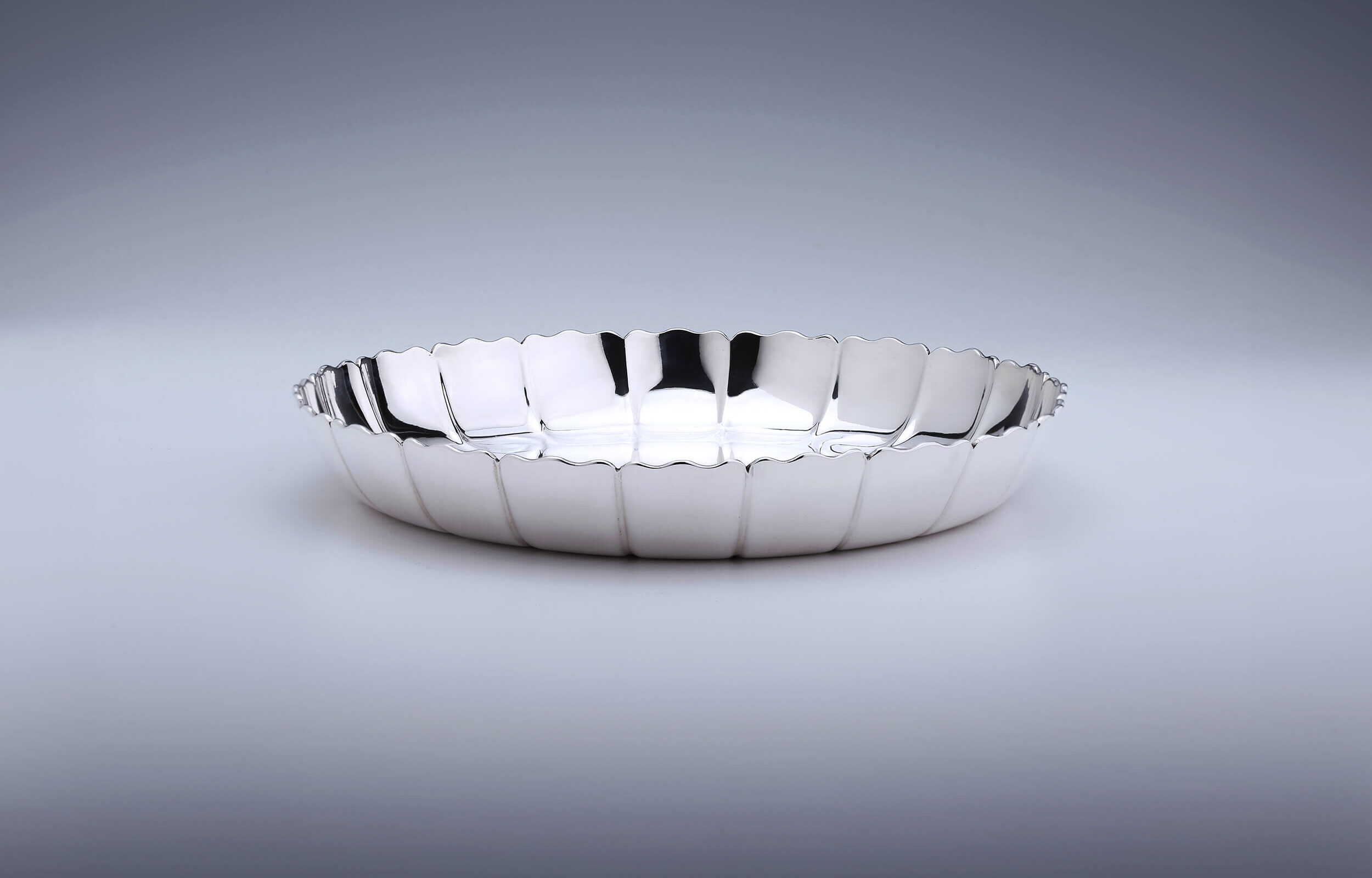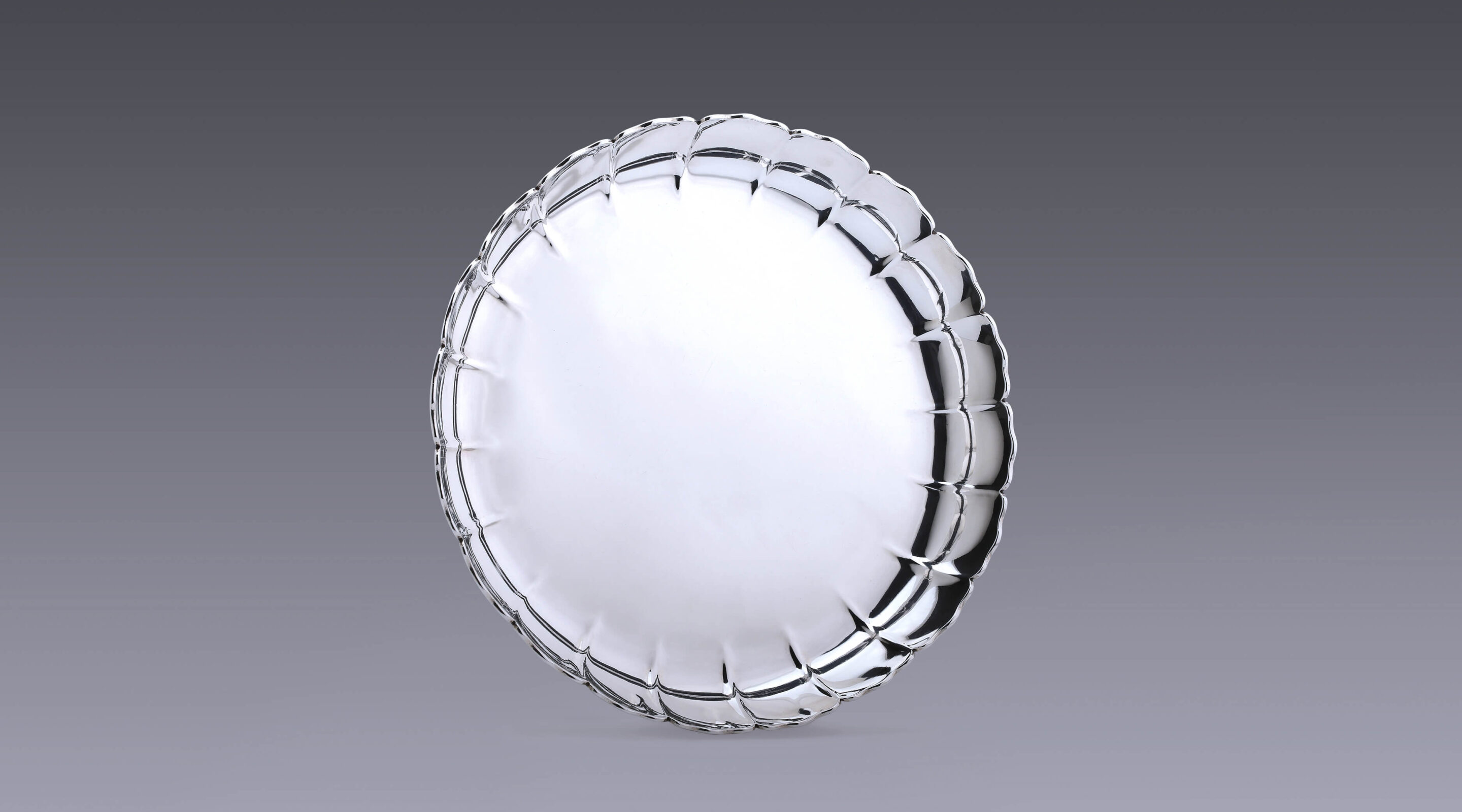The sleek, understated design of this large strawberry dish has a timeless look. And yet it is more than 250 years since it was made by the Amsterdam silversmith Hendrik Swierinck. The dish is round, completely plain, and tapers up to the border. The lobate edge has an accolade shaped top which creates a beautiful reflection in the silver.
A Large Strawberry Dish
This round, plain form with accolade-shaped scallops and upstanding edge is typical of strawberry dishes. They often have between twelve and thirty-two lobes and a diameter ranging from 13 to 25 cm. In England these dishes are known from 1699. They were favored items of Hugenot Silverware, so named in England after the Hugenots who had to leave France during the various periods of religious persecution in the sixteenth and seventeenth centuries. In England they were also known as ‘scallopt plates’ or ‘sallet dishes’. This indicates they were not only used to serve strawberries. In the Netherlands, the strawberry
dish appeared somewhat later, the earliest one known dating from 1710. They generally have a diameter of around 13 cm. Only a few strawberry dishes as large as this one, 23.5 cm, are known in Dutch silver.
Fragaria Moschata
The Dutch word for strawberry, aardbei, comes from the German words aarde (earth) and bei, derived from the French ‘baie’, which means berry. The first strawberries were the small wild ones. Starting in the fourteenth century, they were planted in palace gardens, although they were still usually picked in the wild. In the sixteenth century the plant seems to have established a permanent place in the garden.
The strawberry was believed to have medicinal properties and appears in herbals and in books of cultivation instructions, which could be published with the invention of printing. Three types of strawberries were known: the wild strawberry (Fragaria vesca), the large musk strawberry (Fragaria moschata) and the green or creamy strawberry (Fragaria viridis).
True Delicacy
The cultivated strawberry as we know it today was not introduced into Europe until around the middle of
the eighteenth century. This large red strawberry was brought to France from South America by the French army officer and amateur botanist Amédée François Frézier. In Brittany it was crossed with other varieties until it proved possible to cultivate strawberries. This strawberry did not come onto the market until the end of the eighteenth century. When this dish was made and used for the first time it would probably have held a great many small wild strawberries. It was a true delicacy that was only available
to the wealthiest. They are a feature even on several still lifes from the 17th century as in this painting by Pieter Claesz where they are prominently displayed on a silver plate in front of a precious tazza.
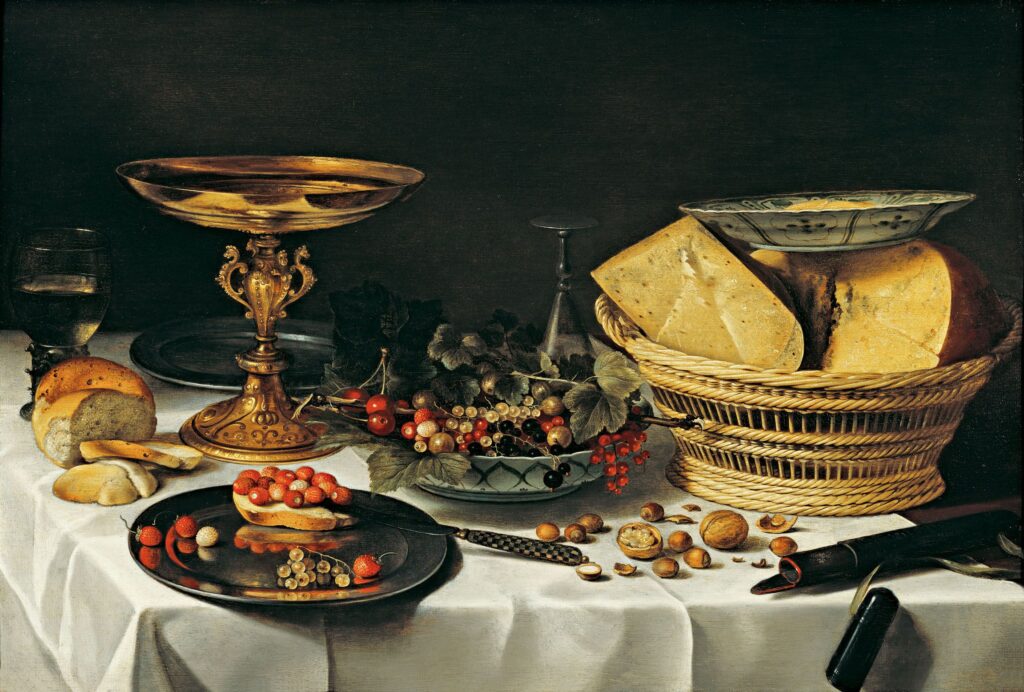
Worldly Pleasure and Lust
There is much more to the strawberry than meets the eye. The first writings mentioning the strawberry were written in Roman times and the fruit was seen as a symbol of the earthly, pleasure and lust. The Romans are also said to have linked the strawberry to Venus, the goddess of love, beauty and sensuality. Since, with some imagination, the strawberry is shaped like a heart and red is the colour of passion, the link was quickly made. But also the many gold-coloured seeds on the fruit and the suggestion of great fertility all fitted Venus.
In the late Middle Ages and Renaissance, the fruit, although also still seen as a symbol of worldly pleasure and lust, initially takes on a very clear religious connotation, of piety and devotion. The three green leaves on the stem were seen as an allusion to the Holy Trinity, the five petals on the fruit to the five wounds of the dying Christ on the Cross, and the red fruit to his blood. The white flowers stood for the purity of the Virgin Mary. Strawberries, as well as strawberry plants with white flowers, were often depicted near the Virgin Mary.
This double role can be seen very well in The Garden of Delights, the famous painting from c 1500 by Dutch painter Hieronymus Bosch in the Museo del Prado, on which he depicts both earthly paradise as well as the caverns of hell, with astounding imagination. The centre panel of the triptych shows the world after the Fall, but before Noah’s Flood. There is chaos on earth and man is behaving
badly. It shows several strawberries with people lying intoxicated on or next to them, symbolising impermanence and temptation.
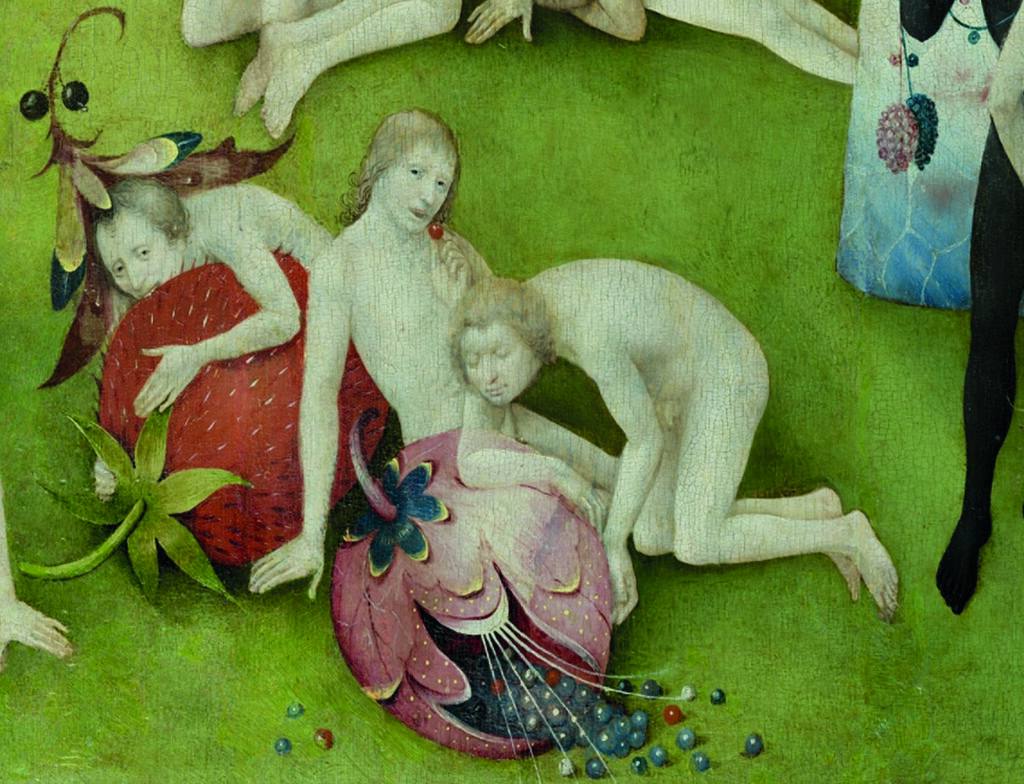
Hendrik Swierinck
Hendrik Swierinck, the son of the landscape farmer Berent Swierinck, was born in Zwolle in 1693. He became a burgher of Amsterdam in 1726 and was entered on the guild plate as a silversmith that same year. He was a skilled silversmith, known for the high quality of his work. In 1733 he married Catharina van Huet, the daughter of Claes van Huet. They lived on Rozengracht and had two childeren, Elisabeth and Barend. His son Barend was also a silversmith. Swierinck died between 1767 and 1772.
Marks
Marked on the underside with the Amsterdam city assay
mark, the Dutch Lion, the date letter Y for 1758 and the
maker’s mark HS with two crossed branches in between
for Hendrik Swierinck

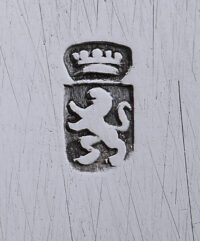
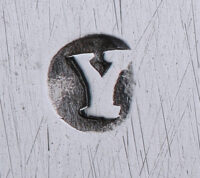
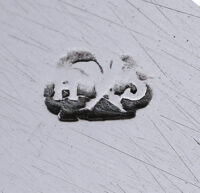
This site is protected by reCAPTCHA and the Google Privacy Policy and Terms of Service apply.
